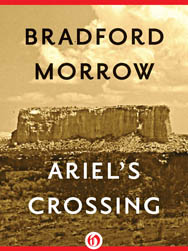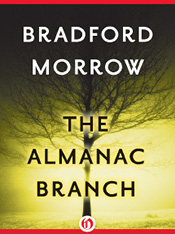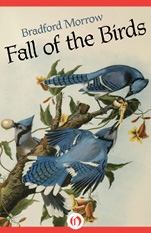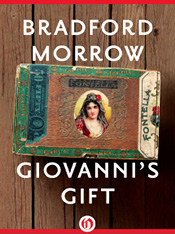Trinity Fields (58 page)

“Some of my brilliant
Conjunctions
staff in the New York office, where the journal is edited: Eimear Ryan, Jessica Loudis, J. W. McCormack, and Jedediah Berry (whose first novel,
The Manual of Detection
, came out to widespread critical praise in the past couple of years). Sitting with us is my dear friend and hero, Barney Rosset, founder and editor of Grove Press and the
Evergreen Review
. Turtle, the
Conjunctions
cat, is wiggling out of my arm, meantime. Summer 2010.”

“A photograph of me walking with my all-time favorite cat, Woody, on the second to last day of his life, at my place upstate. Woody was like no other being, animal or person, I have ever met. I honestly feel that in many ways he was my spiritual superior. He's buried now in the garden along with Grace, another magisterial feline whom it was my honor to hang out with. November 2004.”
Above all I owe a debt of gratitude to my parents for introducing me to New Mexico during our many summer expeditions away from home in Littleton, Colorado. I first set eyes on Pojoaque Valley when I was ten years old, thanks to them, and revisited the little church in Chimayó with them on Easter 1992.
Without the help of retired air force pilot Lieutenant Colonel Roger Daisley of Fox Island, Washington, Kip might not have discovered the Steve Canyon program and Brice might never have noticed the convergences of Los Alamos and Long Tieng. I thank him for answering hundreds of questions about his experiences as head Raven during years of covert operations inside Laos, for sharing personal memories with me and opening to me the hermetic world of spookdom, not to mention the eccentricities of FAC pilotry. Thanks, too, to his wife, Alyse, and family, for putting me up in their home in August 1993. I am also grateful to another of the surviving Ravens, who prefers to remain anonymous, for helping me with details about Kip's experiences in Laos and refugee camps in Thailand during and after the Vietnam war; and to his Vietnamese-born Lao wife, who was so gracious in receiving me at their home.
Hedy Dunn, director of the Los Alamos Historical Museum, not only gave me access to very useful tape recordings and documents during my visits to the Hill, but spent many hours going over the manuscript with me. Also helpful during my research days at Fuller Lodge were archivist Theresa Strottman, curator Rebecca Collinsworth, and intern Eric Alexander.
Native Chimayóan Raymond Bal, who runs the Potrero Trading Post next to the Santuario, and Chimayó historian and artist Elizabeth Kay were most helpful with remembrances of Chimayó in the fifties and since. Sister Antonette Ahles, pastoral assistant to pilgrims, answered my sometimes very secular questions (such as how to go about breaking into the church in 1959) with patience and charm.
I am grateful to Robert Friedman, who edited the
Spectator
at Columbia University during the stormy late sixties, for walking me so vividly through his experiences of antiwar activism during that period.
Jennette Montalvo, faithful research assistant from the summer of 1992 to completion in October 1993, looked up arcana, ran down references, followed fragile threads, was hardworking on the novel's behalf throughout. Ariel Kaminer, namesake of both Wills' daughter, excavated considerable data for me in 1992. Beth Herstein helped me with legal research. This
Trinity
would not have come into being without
that
trinity.
Books of particular value to me were Jane Hamilton-Merritt's
Tragic Mountains
âhers is my source for the rodeo scene in Long Tieng; Christopher Robbins's
The Ravens
; Marta Weigle and Peter White's
The Lore of New Mexico
; Richard Rhodes's
The Making of the Atomic Bomb
; and Peggy Pond Church's
The House at Otowi Bridge
, in which the story of Edith Warner is told. The Los Alamos Historical Society has published valuable books and pamphlets about the history of the Pajarito Plateau and surrounding area too numerous to list.
Mei-mei Berssenbrugge and Richard Tuttle loaned me their house during my first research trip to New Mexico, April 1992, and kindly put me up again the following year. The idea of writing about Los Alamos hatched five months before that, during a sleepless night in Janet Rodney and Nathaniel Tarn's abode out on the desert, from whose windows I could see the lights of the Hill thirty miles toward the west. Anne and Patrick Lannan opened their home to me in Santa Fe last Augustâwhat eerie pleasure was to be had when I looked out the window of their balcony and could see both Mei-mei and Richard's old adobe at the foot of Cerro Gordo, across the river, where the book was begun, and Los Alamos once more far in the distance. I can't thank them enough for their hospitality.
Among others who were particularly supportive: Allen Peacock, Paul West, Dr. Bruce Fader, M. Mark, Jeanie Kim, Donald McKinney, Peter Straub, Nomi Eve, Deborah Eisenberg, Kate Norment, Anthony and Annabel McCall. But for Dr. John Daly and Dr. Mark Wallack I wouldn't have lived to tell the tale. Martine Bellen read the book as it was being written and I want to thank her for crucial encouragement.
Lynn Nesbit, my friend and agent, I thank for believing in this novel from the beginning. I am grateful to everyone at Janklow & Nesbit for their kindnesses and hard work, especially Lydia Wills and Cynthia Cannell.
Nan Graham, like an inspired
santa
, presided over the editing of this book with constant vitality, grace, and intelligence. Others at VikingâPaul Slovak, Courtney Hodell, and Barbara Grossman in particularâhave worked persistently and astutely on behalf of this project, and I thank them. Elizabeth Ruge and Arnulf Conradi of Berlin Verlag contributed a number of important editorial suggestions, and my British editor, Jonathan Warner, whose tragic death prevented him from seeing this book into print, motivated me in my further investigations of Ariel and of Nambé pueblo.
All rights reserved under International and Pan-American Copyright Conventions. By payment of the required fees, you have been granted the non-exclusive, non-transferable right to access and read the text of this ebook onscreen. No part of this text may be reproduced, transmitted, downloaded, decompiled, reverse engineered, or stored in or introduced into any information storage and retrieval system, in any form or by any means, whether electronic or mechanical, now known or hereinafter invented, without the express written permission of the publisher.
This is a work of fiction. Names, characters, places, and incidents either are the product of the author's imagination or are used fictitiously. Any resemblance to actual persons, living or dead, businesses, companies, events, or locales is entirely coincidental.
Grateful acknowledgment is made for permission to reprint excerpts from the following copyrighted works: “Thank God for You” by Sawyer Brown. © 1993 by Mark A. Miller, Travelin' Zoo Music, Mac McAnally, Beginner Music. “Howl” from
Collected Poems
1947â1980
by Allen Ginsberg. Copyright © 1956 by Allen Ginsberg. Reprinted by permission of HarperCollins Publishers, Inc. “Mr. Housman's Message” from
Personae
by Ezra Pound. Copyright 1926 by Ezra Pound. Reprinted by permission of New Directions Publishing Corporation.
copyright © 1995 by Bradford Morrow
cover design by Karen Horton
ISBN: 978-1-4532-1203-5
This edition published in 2011 by Open Road Integrated Media
180 Varick Street
New York, NY 10014
www.openroadmedia.com

Also Available from Open Road Media
Ariel's Crossing
,
the sequel to
Trinity Fields
More Ebooks by Bradford Morrow





